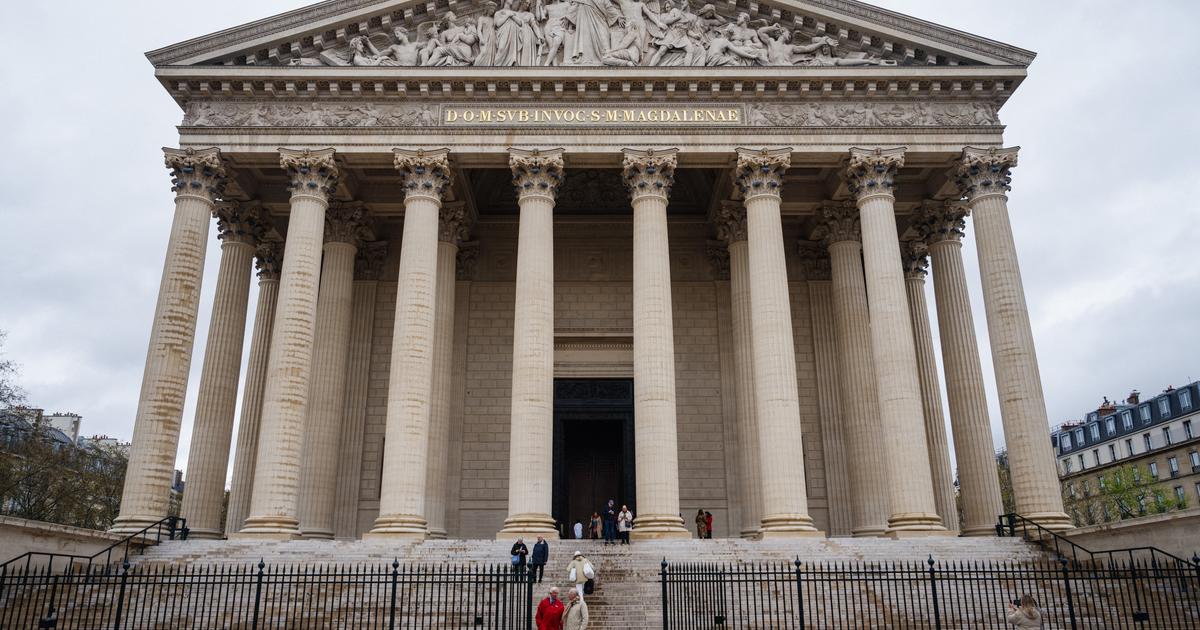The Iron Lady discovers an unexpected rival.
A few centuries before the erection, on the left bank, of the Eiffel Tower, the spectacular star of the Universal Exhibition of 1889, Notre-Dame Cathedral in Paris can also claim to be one of the capital's first iron monuments.
The Gothic building would be the first church in the world to have massively used metal staples during its construction.
This is at least what the researchers of the Metal working group of the scientific site of the cathedral reveal in an archaeological study published on Wednesday in the journal
PLOS One
.
It will have been necessary to go through the virtual destruction of Notre-Dame and a colossal restoration project for the monument to begin to reveal the secrets of its construction.
Started in 1160 and completed nearly a century later, the cathedral was, when the work was completed, the building was the tallest built in its time in the Western world, with a vault culminating at 32 meters and towers at 69 meters.
Researchers have long wondered what the secrets of its longevity were and how the builders of yesteryear made such thin walls stand so tall.
The existing documentation was too fragmented.
“Only the monument can speak
“Explains to AFP the archaeologist Maxime L’Héritier, first author of the scientific study just published and teacher of medieval history at the University of Paris-8.
Read alsoThe "Maison du Chantier" of Notre-Dame de Paris delivers the secrets of the restoration
An old technique but revisited
The fire of April 15, 2019 thus revealed, through the destruction, the contribution of iron staples to the construction of the monument.
Some appeared after the frame went up in smoke.
Others fell when the rock gave way in the heat of the blaze.
And the restoration project provided an unexpected opportunity for researchers to better study the monument.
The cathedral could have more than a thousand staples, of varying sizes, ranging from about 25 to 50 cm long, for a weight reaching up to a few kilos.
They join the stones of the walls of the nave, of the columns of the choir, of the walls of the stands or the elements of the cornices.
Some of the staples studied by the Metal working group of the Notre-Dame de Paris scientific site.
2023 Maxime L'Héritier et al., Creative Commons
It would be neither more nor less the
"first really massive use of iron in a Gothic cathedral, in very specific places
", according to Maxime L'Héritier.
The study he co-signed with seven colleagues recalls that the use of staples had been known since Antiquity, as at the Colosseum in Rome or in Greek temples.
But they were then used to keep the large stone blocks of the lower floors adjusted, before loading them with upper floors.
Notre-Dame, by contrast, explores a "much more dynamic conception
of architecture, where we conceive that masonry can move, and forces exert themselves in certain directions"
, explains Maxime L'Héritier.
Read alsoThe Center Pompidou signs an agreement for a future museum of contemporary art in Saudi Arabia
The Mystery of Gothic Staples
The first builders of the cathedral will use staples from the start of the construction site for the construction of the stands, in the early 1160s. A technical innovation taken up by their successors when they tackle the upper parts of the walls, in a "
filiation technique"
thus extending over 50 to 60 years.
The use of staples at Notre-Dame de Paris will be replicated later on the construction site of the cathedrals of Soissons, then of the Gothic monuments of Chartres and Bourges.
The staples of a cornice of the choir of the cathedral, described in a plate by Eugène Viollet-le-Duc, and photographed today.
2023 Maxime L'Héritier et al., Creative Commons
The role, as important as it was discreet, of these thousands of clasps, however, fell into oblivion over the following centuries.
At most, the architect Eugène Viollet-le-Duc, who restored Notre-Dame in the 19th century, noticed the use of staples in the cornices.
The architectural specialists saw them well in the stands, but did not know how to explain their presence, for lack of time to examine them.
Maxime L'Héritier cites the example of a great American art historian who
“didn't really know what to think of it”
.
The restoration site of the cathedral opens the book of its construction, with around 200 scientists hard at work.
The team led by the archaeologist was thus able to analyze in detail the composition of the iron in the staples.
And determine by studying its impurities that it comes from at least six different places.
Scientists are currently trying to determine its origin, in order to better understand the market for this material in medieval times.
Others follow the same path to determine the original quarries of the stones.
Just like those who will sample the forests in search of the same chemical elements as those of the wood of the frame today charred.
The commitment of the President of the Republic was to rebuild the cathedral in five years;















